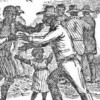
Isaac Land, “On the Foundings of Sierra Leone, 1787-1808”
This article offers a critical reading of who was sent to Sierra Leone, why West Africa was chosen as the destination, and discusses the larger meanings, contexts, and legacies of the “Province of Freedom.”
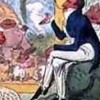
Timothy Johns, “The 1820 Settlement Scheme to South Africa”
The 1820 settlement scheme to South Africa marks an important conjuncture both for the colony’s internal development and for the rhetoric of immigration in the internal politics of Britain. Examining the rationale for the venture in light of the seminal historical event of the age—the Peterloo Massacre of 16 August 1819—and in light of Romantic notions of the “Noble Savage,” this entry attempts to demonstrate how concerns surrounding the South African scheme came to be entangled within larger debates over joblessness, slavery, class struggle, and inanition in early nineteenth-century British culture. Limiting its focus to a reading of The Emigrant’s Cabin (1822, 1834), a poem by the settler-poet Thomas Pringle (1789-1834), the entry argues that 1820 settler rhetoric navigated debates over labor through a novel engagement with time. By imagining a two-tiered system of labor time in the poem—one for settlers, based on unemployment relief and freedom from the oppressive pace of industrial life; and one for the African labor force on the eastern Cape farms, based on missionary discipline, a proto-Victorian program of “improvement,” and freedom from slavery—Pringle’s verse helped foster a British cultural identity in the Cape that resonates even today.
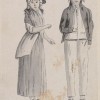
Julie M. Barst, “The Molesworth Report and the Dissolution of Convict Transportation to Australia, August 1838”
This entry focuses upon convict transportation to Australia (which spanned eight decades from 1788 to 1868) and argues that the Molesworth Report of 1838, which successfully built upon the rhetoric of the abolition movement by drawing connections between convicts and slaves, became one of the major deciding factors in eventually putting an end to the entire system of transportation. I claim that the report not only raised questions about the effectiveness of the system, but also generated sympathy for the convicts and led to a transformation in how Britons thought about the punishment of their criminal classes.

Sharon Aronofsky Weltman, “1847: Sweeney Todd and Abolition”
The prolific (but rarely remembered) Victorian playwright George Dibdin Pitt wrote the first Sweeney Todd dramatization in 1847 for the Britannia in London’s East End, tailoring his melodrama for the theater’s particular audience and the acting company’s individual talents. Not published until 1883 in Dick’s Standard Plays (as Sweeney Todd: The Barber of Fleet Street, or The String of Pearls), the printed play differs significantly from Dibdin Pitt’s original, which was initially performed on 1 March 1847 as The String of Pearls, or The Fiend of Fleet Street. Scholars who rely on the 1883 Sweeney Todd to discuss the 1847 melodrama are in many respects talking about a different play. One major difference involves a main character who appears only in the 1847 version. In the 1846-47 novel, a faithful dog named Hector is important to the plot; in the 1847 play, he is transformed into a major heroic character who foils the play’s villains — no longer a dog, but a deaf-mute black boy, a former slave from British Honduras who loyally continues to serve his former owner and current employer out of love and gratitude for his freedom. By including this character, Dibdin Pitt takes an identifiably abolitionist stance, working through what was still England’s strong sense of moral achievement in abolishing slavery and still strong sense of purpose in working to end slavery in the United States. But by 1883, in regards to race and colonialism, the cultural work of Dibdin Pitt’s play without Hector operates through an unthinking backdrop of the Empire’s power and the status quo of racial hierarchy.

Lorraine Janzen Kooistra, “The Moxon Tennyson as Textual Event: 1857, Wood Engraving, and Visual Culture”
By convention the launch of the so-called “golden age” of wood-engraved illustration in Britain, also known as “the sixties,” is Edward Moxon’s publication, in May 1857, of Alfred Tennyson’s Poems, with 54 wood-engraved illustrations designed by 8 artists, including the Pre-Raphaelites John Everett Millais, William Holman Hunt, and Dante Gabriel Rossetti. Although the Moxon Tennyson was neither a commercial nor critical success on first publication, before the decade was out its Pre-Raphaelite designs were considered a touchstone for artistic illustration, a reputation that continues today. Without disputing the significance of this aesthetic achievement, I want to shift critical focus to the Moxon Tennyson’s status as mass-produced work of art in the age of mechanical reproduction. My interest here is in how its visual communication was expressed through its reproductive technology at the historical moment of its production and reception. This essay re-positions the Moxon Tennyson as a textual event by reading it in the context of documentary, satiric, and artistic wood-engraved images selected from the crucial six-month period after its publication. By situating the Pre-Raphaelite illustrations for Tennyson’s Poems in relation to representations in the public press of such disparate events as the Art Treasures of the United Kingdom Exhibition in Manchester, the reportage on Indian uprisings at Meerut and Cawnpore, the Matrimonial Causes Act, and the Christy Minstrels show in London, I aim to show the complex ways in which the Moxon Tennyson was a worldly event, caught up in, and contributing to, ways of seeing and knowing in 1857.

Ian Duncan, “On Charles Darwin and the Voyage of the Beagle”
The event now known as “the voyage of the Beagle” comprises Charles Darwin’s circumnavigation as ship’s naturalist on the second of three surveying voyages by H.M.S. Beagle; the writings published as his first book, the Journal of Researches; and the genesis of his theory of evolution by natural selection. Writing between regimes of world-knowledge, Darwin mediates scientific observation through the language of aesthetics, and seeks to understand the convergence of disparate scales of geological and human history.
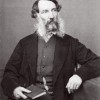
Sarah Winter, “On the Morant Bay Rebellion in Jamaica and the Governor Eyre-George William Gordon Controversy, 1865-70”
In the aftermath of the Morant Bay rebellion that broke out on 11 October 1865, the Governor of Jamaica, Edward John Eyre, ordered extensive and harsh reprisals against Black Jamaicans in the county of Surrey under a period of martial law lasting from 13 October to 13 November. Eyre’s actions provoked widespread controversy among intellectuals, politicians, and the general public in Britain. The Jamaica Committee was organized in December 1865 to monitor the government’s response. After a Royal Commission investigation of the rebellion and its aftermath, Eyre was removed from his post and recalled by the Colonial Office. Led by John Stuart Mill, the Jamaica Committee undertook three attempts between 1866-68 to prosecute Eyre for murder and abuse of power for his role in sanctioning the court martial and execution of George William Gordon, a former slave and Jamaican politician who was accused of fomenting the rebellion. Repeatedly, English grand juries refused to indict Eyre or convict his subordinates. The question of the constitutionality of martial law raised by the Jamaica Committee’s prosecutions implied that taking sides for or against Eyre’s actions was fundamentally an expression of political views about the legal limitations on the use of force in imperial governance. Defending the importance of the constitutional principles at stake in the Jamaica Committee’s unsuccessful prosecutions of Eyre, Mill articulated the duty to uphold the rule of law as a fundamental principle of modern citizenship. The question of the extent of Gordon’s rights as a “fellow-citizen” within the British Empire, however, remained unresolved.

Elsie B. Michie, “On the Sacramental Test Act, the Catholic Relief Act, the Slavery Abolition Act, and the Factory Act”
Examining two sets of intertwined Parliamentary Acts that went into effect before and after the Reform Act of 1832, this entry argues that they make visible the gestures that led up to and resulted from reform.
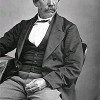
Matthew Rubery, “On Henry Morton Stanley’s Search for Dr. Livingstone, 1871-72”
The meeting between Henry Morton Stanley and Dr. David Livingstone in Africa was one of the most sensational news stories of the nineteenth century. Stanley’s greeting, “Dr. Livingstone, I presume?” is still a well known phrase. The Scottish missionary had been out of contact for several years when an American newspaper sent its correspondent to search for him. The meeting turned public attention to the African slave trade and was a pivotal moment in the relationship among the United States, Europe, and Africa.
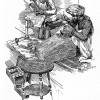
Aviva Briefel, “On the 1886 Colonial and Indian Exhibition”
This essay explores the 1886 Colonial and Indian Exhibition, focusing specifically on its unprecedented display of 34 Indian artisans. It contextualizes this display in relation to Victorian discourses that lamented the disappearance of the British working body through mechanization, and that conflated the authenticity of South Asian crafts with the presence of “genuine” Indian bodies.
